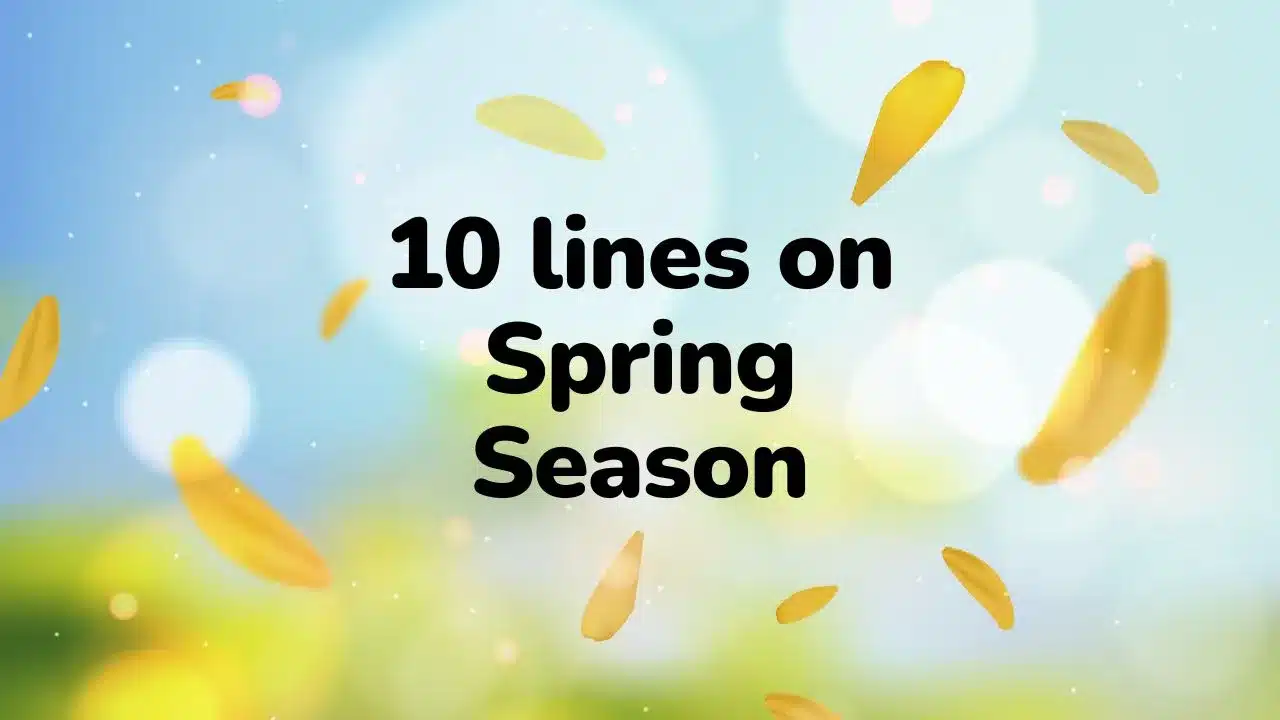Today, we are sharing 10 lines on Spring Season in English. This article can help students who are looking for information about 10 lines on Spring Season. This Lines is very simple and easy to remember. The level of these Lines is moderate so any student can write on this topic.
This article is generally useful for class 1,class 2,class 3,class 4,class 5,class 6,class 7,class 8,class 9,class 10,class 11,class 12
10 lines on Spring Season
1) Spring season is a time of renewal and rejuvenation, marking the transition from winter to summer.
2) The arrival of spring is often associated with blooming flowers, budding trees, and vibrant colours returning to the landscape.
3) The weather during spring is typically mild and pleasant, with gradually increasing temperatures and longer daylight hours.
4) Spring is a season of new beginnings, symbolizing growth, hope, and optimism.
5) Many animals, such as birds and butterflies, return from their winter migrations during spring, adding to the sense of vitality and activity.
6) Spring is a popular time for outdoor activities like picnics, gardening, and hiking, as people take advantage of the pleasant weather.
7) It is also a time when farmers start planting crops and gardens come alive with fresh produce and blossoming plants.
8) Spring festivals and celebrations are held in various cultures around the world, often featuring traditions and customs that honour the season.
9) The changing season in spring has a positive effect on people’s moods, as the increased sunlight and blooming nature can uplift spirits.
10) Springtime is a reminder of the cyclical nature of life, bringing a sense of joy and anticipation for the warmer months ahead.

5 lines on Spring Season
1) Spring is a season of rebirth and renewal, bringing forth new life and vibrant colours to the world.
2) The weather during spring is typically mild and pleasant, making it a popular time for outdoor activities and enjoying nature.
3) Flowers bloom, trees regain their leaves, and the sounds of birdsong fill the air, creating a picturesque and lively environment.
4) Spring symbolizes hope and optimism, as it represents the end of the cold winter months and the beginning of warmer days.
5) Many cultures celebrate spring festivals, embracing the season’s beauty and significance as a time of growth and new beginnings.
FAQ
Answer: The start and end dates of spring can vary depending on the geographical location. In general, spring starts around March or April in the Northern Hemisphere and around September or October in the Southern Hemisphere. The duration of spring is approximately three months.
Answer: The changes in weather during spring are primarily caused by the tilt of the Earth’s axis and its orbit around the sun. As the Northern Hemisphere tilts towards the sun during spring, it receives more direct sunlight, resulting in warmer temperatures. This phenomenon leads to the melting of snow, the thawing of frozen ground, and the gradual transition from winter to spring weather.
Answer: Spring is associated with blooming flowers and blossoming trees because the increasing sunlight and warmer temperatures trigger the growth and development of plants. This stimulates the dormant buds on trees to sprout new leaves, and it prompts flowers to bloom and release their vibrant colours and fragrances. The pollination process, aided by the return of bees and other insects, further contributes to the abundance of flowers during spring.
Answer: Yes, many cultures and regions have celebrations and festivals associated with spring. For example, the Hindu festival of Holi, also known as the Festival of Colors, is celebrated in India and other parts of South Asia to welcome the arrival of spring. In Western cultures, Easter is celebrated during spring, commemorating the resurrection of Jesus Christ. Additionally, various May Day festivities, such as Maypole dancing and flower crowns, are observed in some European countries to mark the beginning of spring.
